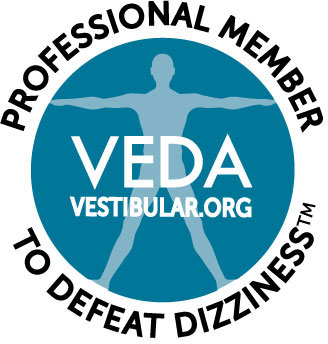Your ability to step from hardwood floor onto carpet without stumbling probably seems innate, as effortless as breathing. But your sense of balance is actually a highly complex process regulated by your vestibular system (inner ear), in conjunction with your visual (eyes) and proprioception ( touch) systems. One way of thinking about it is imagining that your balance system is your body’s GPS, which relies on visual, vestibular and touch clues to create an accurate “map” of the world around you. If your visual, proprioception or vestibular system isn’t coordinating properly with the other systems, your “map” may be flawed, resulting in balance issues that can cause problems like dizziness and poor balance.

Man stands on the peak of sandstone rock watching over valley to Sun. Beautiful moment the miracle of nature
In today’s post, we discuss the role of each system in giving you good balance and explain how a binocular vision condition known as vertical heterophoria can disrupt a person’s balance.
Vestibular System
Your vestibular system, which is controlled by various parts of the inner ear, gives the brain information about movement. This can be in the linear (straight ahead) direction, side to side, or the rotational direction. Our inner ears also give the brain information about the force of gravity. This vestibular system can be affected by a number of diseases and it tends to weaken as we age. A person with a damaged vestibular system needs to rely more heavily on the visual and touch systems to stay balanced.
Visual System
The visual system not only gives us clear images, but also gives us our depth perception, motion perception, sense of light and color, and spatial awareness. Our binocular visual system also coordinates the images from the two eyes so we do not see double. This is controlled by the eye muscles which are attached to each eye. The visual system sends signals to the vestibular system, which lets the brain know that we are moving through space and the world is not moving. This is called the vestibular oculomotor reflex.
Proprioception System
The final piece in the puzzle is your touch system which, together with your visual and vestibular systems, allows you to move through space feeling balanced. Signals from your legs, feet, muscles, skin and joints help keep us upright and balanced when we move.
How Vertical Heterophoria Can Disrupt the Vestibular System
Vertical heterophoria is an eye muscle strain condition that can cause blurred, shaking or double vision. When the eye muscles are under constant strain to keep the images from the two eyes seeing as one, they begin to quiver and hurt. The slight movement of the images send signals to our vestibular system and brain that the world is moving — when in fact, it is still. This causes headaches, dizziness and an unbalanced gait. At the Neuro Visual Center of New York, we offer innovative treatment options for vertical heterophoria. If you are suffering from dizziness, vertigo or other balance issues, we can help. To learn more, call us today at (516) 224-4888.





